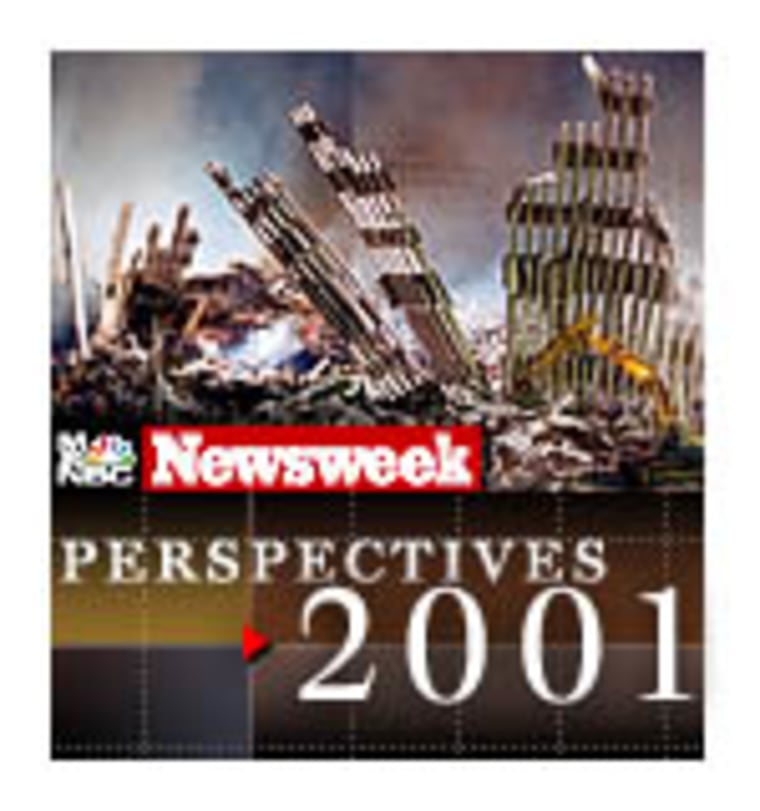Try this math problem: “A Kalashnikov bullet travels at 800 meters per second. A mujahed has the forehead of a Russian in his sights 3,200 meters away. How many seconds will it take the bullet to hit the Russian’s forehead?” Or how about this one: “A group of mujahedin kill 178 out of 3,560 enemy soldiers in battle. What percentage of the enemy have they killed?” No, these aren’t gags—they’re actual lessons from a fourth grade textbook still in use in Afghanistan.
I WAS ASTONISHED to find questions like these in a stack of schoolbooks, many of which had been printed on rough recycled paper, like matchbox covers, here at the NEWSWEEK house in Kabul. My colleagues had stocked up on the books, which combine math and grammar in one volume, to practice their Dari language skills. But these seemed more like war manuals. “Oh yes, they’re filled with propaganda,” says Faisal Khan Inayat, one of our interpreters, of the books. The first time he saw the material in his younger sister’s textbooks, he recalls, he threw them in the fireplace.

Afghan textbooks—many of which were printed in Pakistan during the 1980s—have long served the dual purpose of basic education and political indoctrination. Children start school with “J is for Jihad” and “M is for Mujahed” (Islamic guerrilla) grammar lessons in the first grade and progress to a full-blown “Jihad Manual,” with lessons on recognizing the enemies of Islam and hand-drawn diagrams on assembling AK-47 rifles, by the seventh.
“Successive regimes have manipulated the school system to meet their own needs,” Sarajeddin Alimi, 50, director of the Department of Education at Kabul University told me. The mujahedin added religion and propaganda against the Soviets, who occupied Afghanistan from 1979 to 1989. The Taliban combined the militarized texts with their own brand of combative Islamic studies—10 additional study hours per week—for first through twelfth grade. Teachers often doubled as soldiers, blurring the line between military and civilian education.
“Students were familiarized with weapons so they could be used by the government,” Alimi explained. Of course, not all students succumbed to the Taliban’s attempts at brainwashing. The Micro-Royan housing complex, a middle-class neighborhood of featureless Soviet block apartments near the NEWSWEEK house, seemed like a Taliban-proof place. I asked the students at Micro-Royan how they felt about their schooling. “Textbooks need to be changed completely,” said Naqibullah Shahrzad, 19, a recent high school graduate who was playing volleyball with a group of teenagers. “The subjects are all mixed with war and fighting.” Ashuka Karimi, 13, a seventh grade biology fan agreed. “I don’t want to be a mujahed,” he said. “We should start using textbooks from before the time of the Taliban.”
The students may get their wish. Although the interim government of Hamid Karzai doesn’t officially take office until Dec. 22, the Ministry of Education has already begun using the winter school break for reforming texts. New textbooks covering 18 subjects, excluding AK rifles and assassination, are being written for grades one through 12. “The new books will focus on the subject being taught instead of political matters,” said Abdulnabih Wahedi, 58, who is overseeing the production of the texts for the Ministry of Education. “And we will require Islamic studies only to the point that would be expected from a Muslim country.” The new books for first through third grade should be available by spring, and teachers will use old texts as reference points until all new books are ready.
That’s going to take time. And already some Afghans are worrying that the new regime will subtly infuse their own political messages into the curriculum. At Esteghlal High School, alma mater of assassinated Northern Alliance leader Ahmad Shah Massoud, headmaster Saduddin Nezami, 45, says changes in school texts would be welcome if done by an elected body. Sitting against a backdrop of broken windows and gutted school clocks, he adds: “If a Loya Jirga [national assembly] takes place and an elected administration comes into power, they should make the necessary changes.”
Still, classes that teach students to explain—”in detail”—the difference between jihad and holy war are hardly the biggest obstacles facing Afghan educators. Afghanistan’s school enrollment is among the lowest in the world, with only 3 percent of girls and 39 percent of boys registered to receive a formal education. For the majority of the country’s children, biased books are less of a problem than the fact that so few of them are ever likely to be able to read them.
© 2003 Newsweek, Inc.